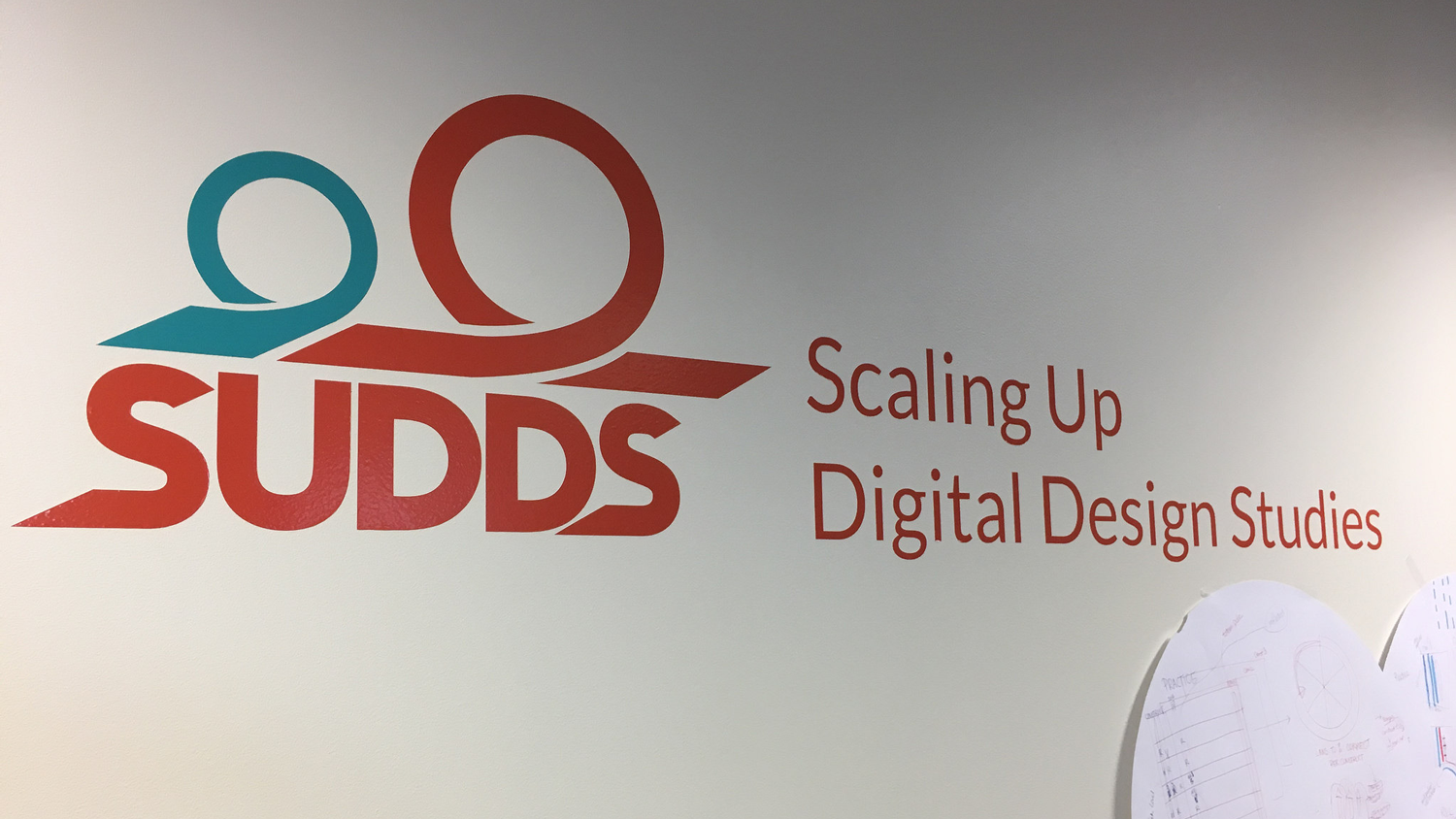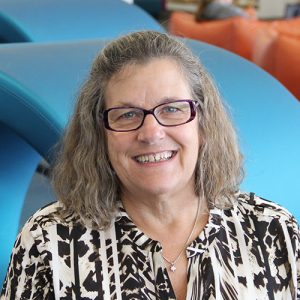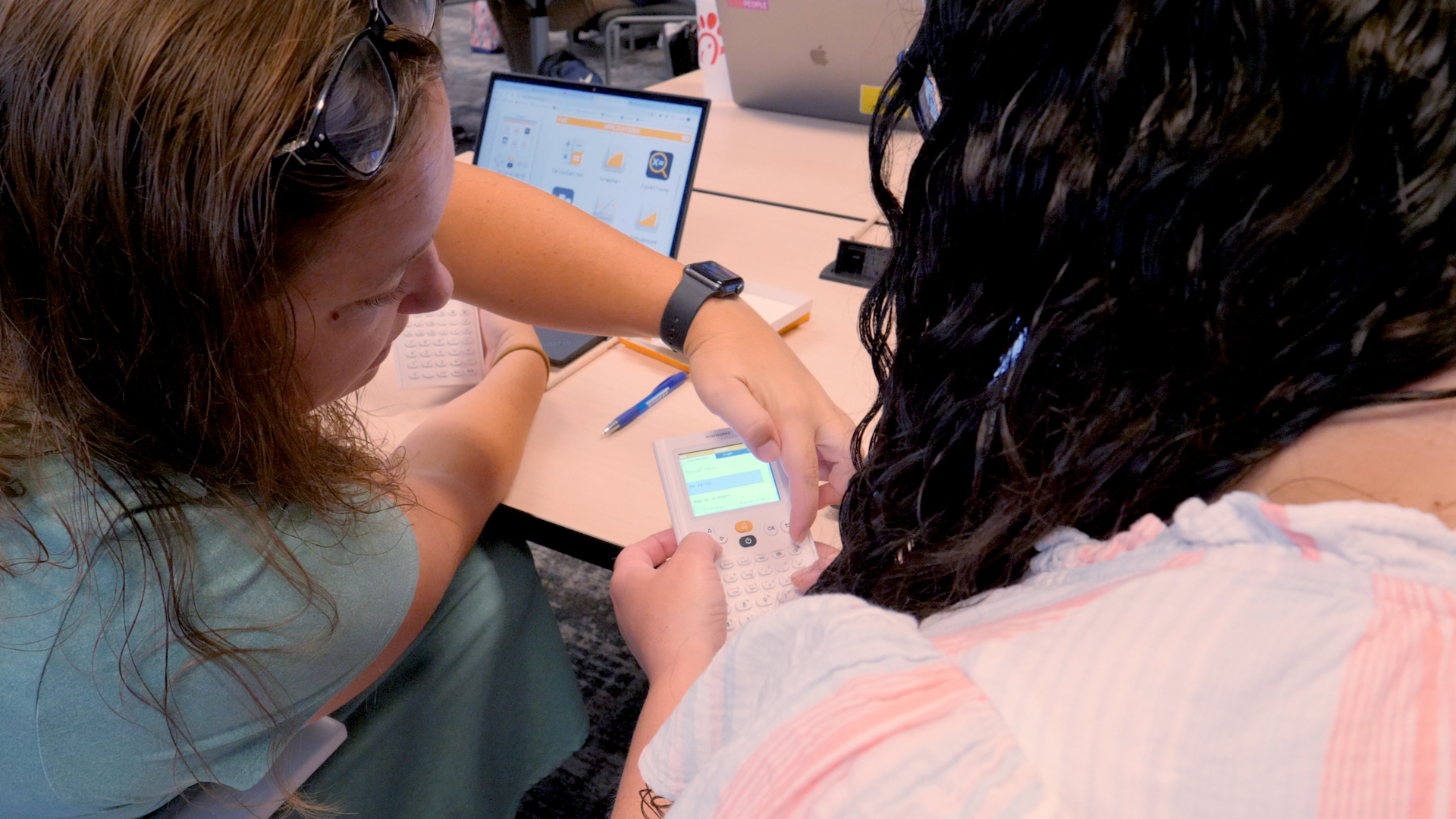Mapping Out Middle School Math

Jere Confrey wants to show kids that math is not an impossible task. That’s why Confrey, who is the Joseph D. Moore Distinguished Professor of Mathematics Education in the College of Education, assembled the Scaling Up Digital Designs (SUDDS) team.
When she’s not teaching learning sciences courses to doctoral students, Confrey is leading a team of education researchers, software developers and designers in creating education technologies that address the learning challenges today’s children face. The tools created by the SUDDS team are gaining national attention — Math Mapper 6-8, a product for middle school mathematics teachers, received a $3 million grant from the National Science Foundation in 2016.
We recently sat down with Confrey to learn more about SUDDS and the educational tool she hopes to implement in North Carolina schools in the coming year.
What do you do at SUDDS?
We create digital innovations to solve problems in practice in mathematics education. We try to solve the problems via innovation-oriented methods, meaning we work with an agile methodology and are responsive to users of our product. In a sense, we co-design solutions with the users of our product — teachers and students.
Tell us more about the tool you are creating.
The tool we are continuously working on is called Math Mapper 6-8. It is a piece of software that enables middle grades math teachers to visualize the content of the Common Core curriculum as a set of big ideas. Math Mapper allows teachers to unpack how kids understand concepts with learning trajectories and links to curated resources, offers teachers a set of diagnostics to test how students are doing, and provides the data from tests in real time so they can determine which topics and concepts need to be revisited.
For example, if the curriculum requires students to understand and identify basic ratio relations, Math Mapper provides a hierarchical map of concepts that students must first understand such as ratio equivalence, base ratio and unit ratio. Not only does Math Mapper help teachers understand the curriculum and requirements, but it also enables them to teach in a trajectory that builds on kids’ reasoning and ideas.
Why is a tool like this critical for teachers and students?

Today’s teachers are dealing with more diversity in levels of student preparedness. Students in the same class can be multiple grades ahead or behind one another, so teachers are in need of more precise information of what each individual student needs in order to succeed. This tool allows teachers to systematically meet the diverse needs of their students by identifying where each student is struggling and how they can help.
Additionally, in the post-recession era, schools aren’t purchasing the same amount of textbooks of the same quality as they did before the recession. This has led teachers to put together various resources from the Internet, a practice that can result in an incoherent curriculum. Math Mapper provides a scaffolding to help teachers choose the right materials.
Why is the College of Education the best place for you to do this work?
NC State has one of the strongest STEM programs in the country, and the College of Education is deeply committed to STEM education. Our students and alumni completed a lot of the research that we’re building on, so it makes sense for us to be here at NC State. Also, NC State has a commitment as a state institution to improve North Carolina in a concrete way. This is our contribution to that obligation.
What advice do you have for aspiring educators?
It’s an exciting time to be a teacher, as we’re moving into a time where I predict we will see significant changes in how education functions. For example, places of informal education and schools won’t be so isolated from each other, there will be increased implementation of new technologies and learning systems, and we will reorganize schools in a more digitally connected way.
It’s also important to keep in mind that there are a lot of ways to be involved in education. Teaching is an extremely valuable way to be involved, but you can also make a difference in education research. We need people who are really well versed in education to do the work of creating new technologies that will change the face of education.
Learn more about Math Mapper 6-8 and the SUDDS team.
- Categories:


